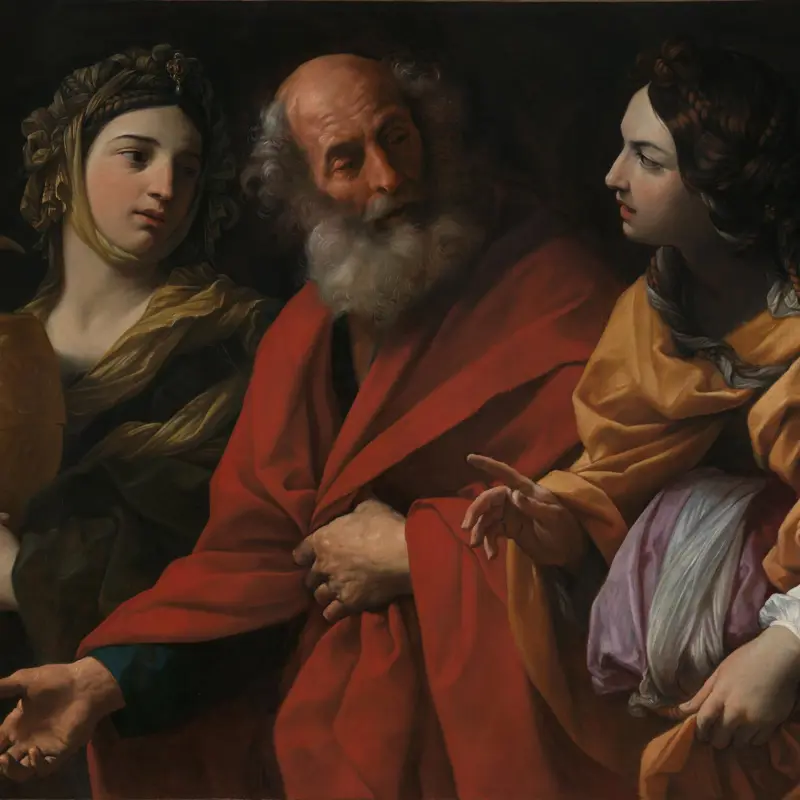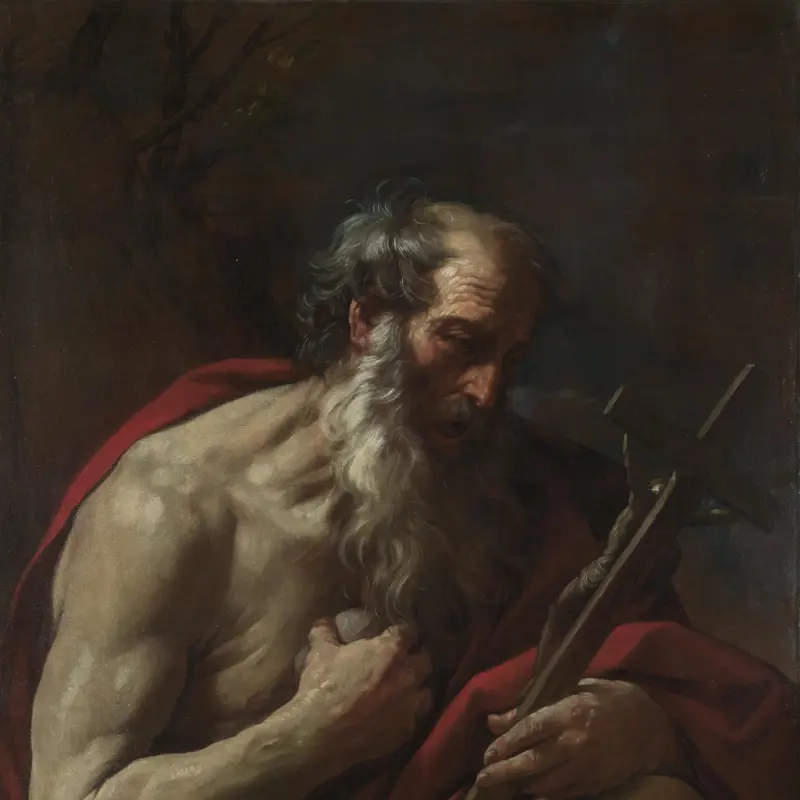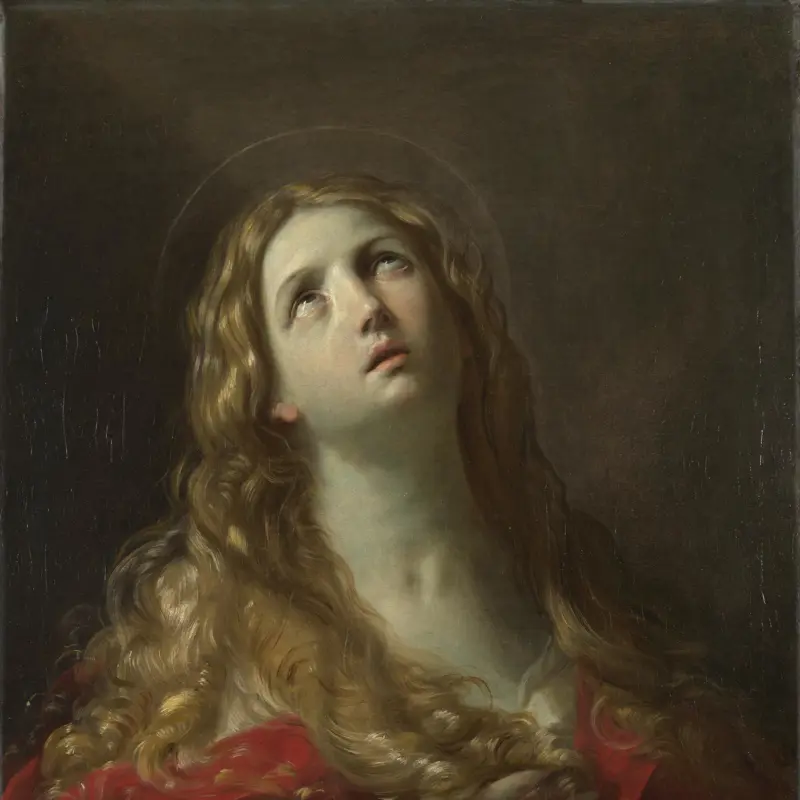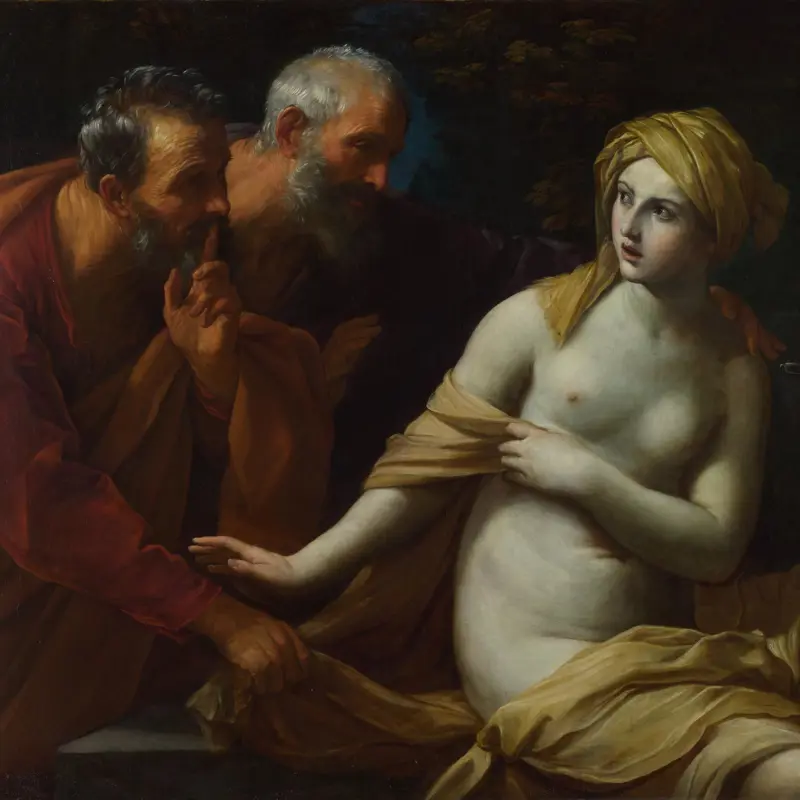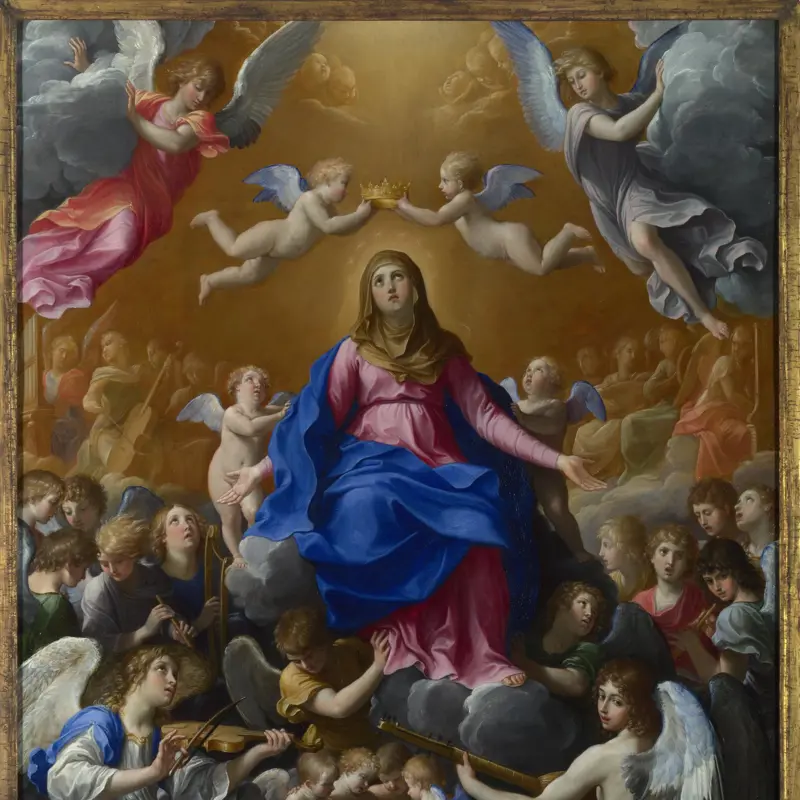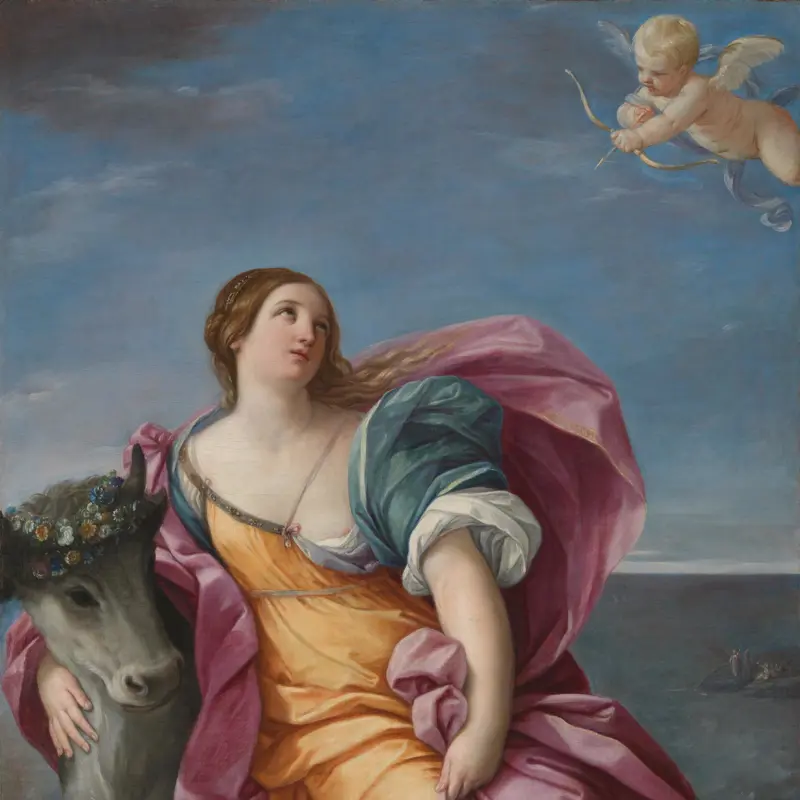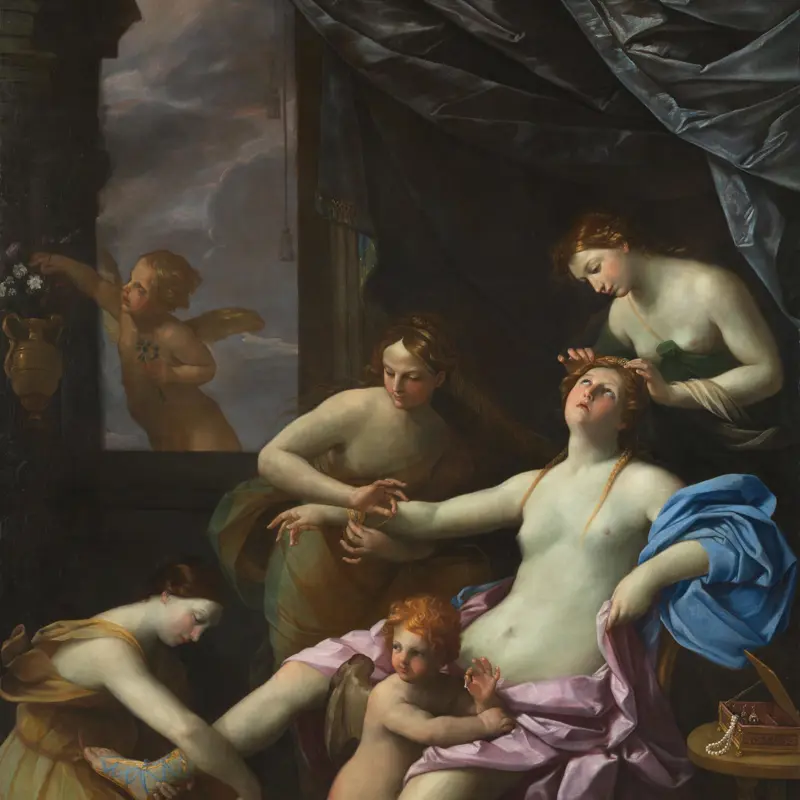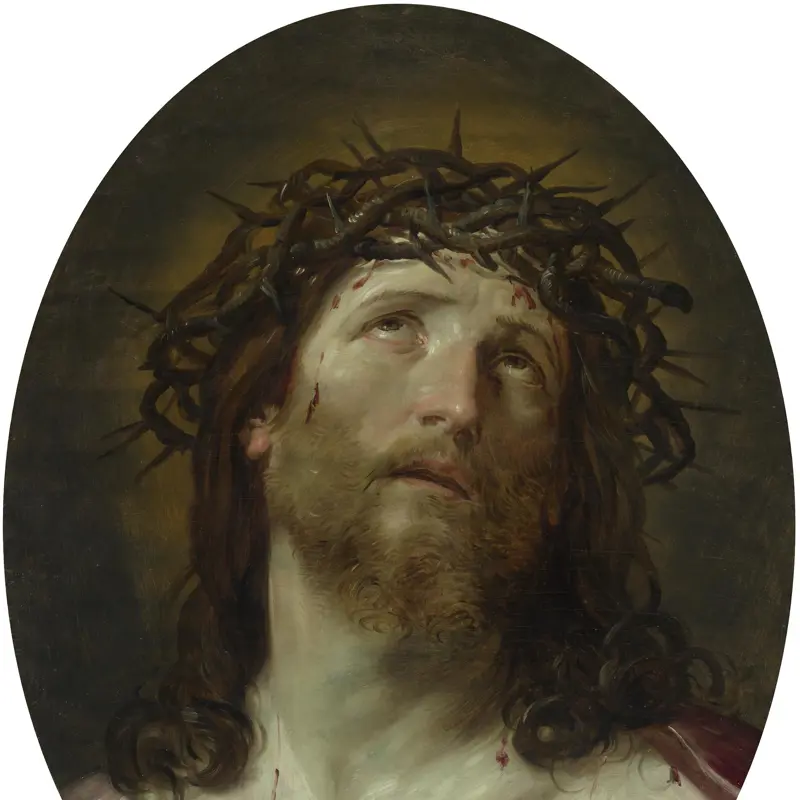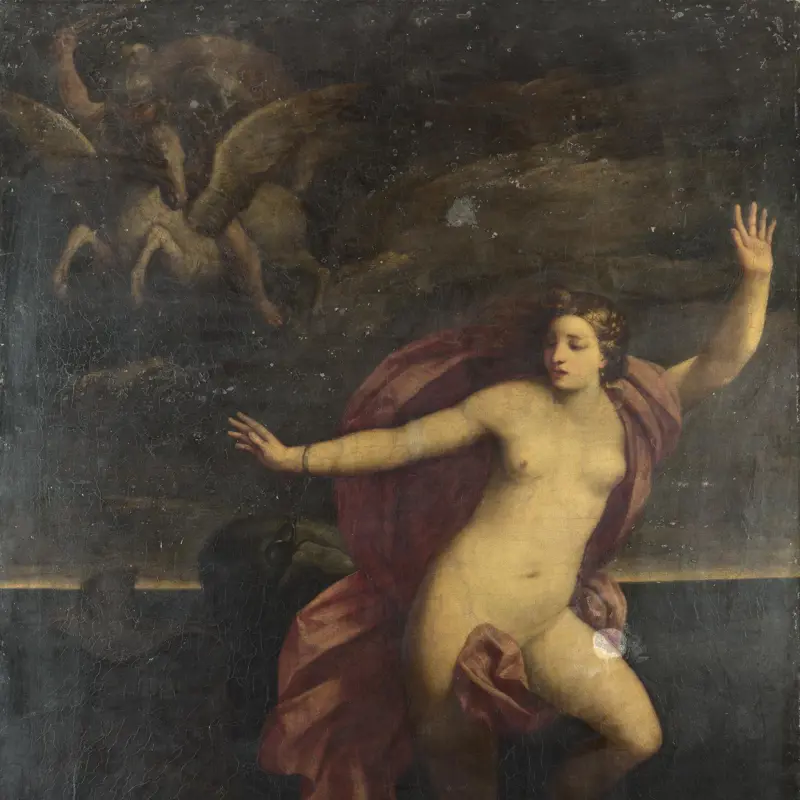Guido Reni, 'Christ embracing Saint John the Baptist', about 1640
About the work
Overview
This scene depicts an intimate moment between Christ and Saint John the Baptist, here identified by his camel-skin garment and reed cross.
The pair are more frequently portrayed meeting as young children, in an episode drawn from biblical apocrypha, or during Christ’s baptism, which was performed by Saint John. Guido Reni has instead chosen to paint the youths embracing in a nondescript location. John clasps his hands reverently as he turns towards Christ, who looks back with a serene expression.
The loose brushwork and pale, limited colour palette indicate that this work was painted late in the artist’s career. The figures are rendered in fluid, sweeping brushstrokes, and lack the finish and detail evident in earlier works. Reni’s late works typically represent devotional subjects in simplified, half-length compositions, as here.
Key facts
Details
- Full title
- Christ embracing Saint John the Baptist
- Artist
- Guido Reni
- Artist dates
- 1575 - 1642
- Date made
- about 1640
- Medium and support
- oil on canvas
- Dimensions
- 48.5 × 68.5 cm
- Acquisition credit
- Bought, 1844
- Inventory number
- NG191
- Location
- Not on display
- Collection
- Main Collection
- Previous owners
Provenance
Additional information
Text extracted from the ‘Provenance’ section of the catalogue entry in Michael Levey, ‘National Gallery Catalogues: The Seventeenth and Eighteenth Century Italian Schools’, London 1986; for further information, see the full catalogue entry.
Bibliography
-
1824W. Buchanan, Memoirs of Painting: With a Chronological History of the Importation of Pictures by the Great Masters into England Since the French Revolution, London 1824
-
1844Christie, Manson & Woods, A Catalogue of the Very Celebrated Collection of Pictures, of Jeremiah Harman, Esq., Deceased, and Removed from Higham House, Woodford, London, 17 May 1844 - 18 May 1844
-
1853National Gallery, Report from the Select Committee on the National Gallery, together with the Proceedings of the Committee, Minutes of Evidence, Appendix, and Index, London 1853
-
1853London, National Gallery Archive, NG15/3: Report from the Select Committee on the National Gallery, together with the Proceedings of the Committee, Minutes of Evidence, Appendix, and Index, 1853
-
1878H. Blackburn, Illustrated Catalogue to the National Gallery: Foreign Schools, London 1878
-
1888E.T. Cook, A Popular Handbook to the National Gallery Including, by Special Permission, Notes Collected from the Works of Mr. Ruskin, London 1888
-
1971E. Baccheschi, L'opera completa di Guido Reni, Milan 1971
-
1971M. Levey, The Seventeenth and Eighteenth Century Italian Schools, London 1971
-
1978D. Robertson, Sir Charles Eastlake and the Victorian Art World, Princeton 1978
-
1982H. Brigstocke and W. Buchanan, William Buchanan and the 19th Century Art Trade: 100 Letters to his Agents in London and Italy, London 1982
-
1984D.S. Pepper, Guido Reni: A Complete Catalogue of His Works, Oxford 1984
-
1986Levey, Michael, National Gallery Catalogues: The Seventeenth and Eighteenth Century Italian Schools, London 1986
-
1988D.S. Pepper, Guido Reni: L'opera completa, Novara 1988
-
1993R. White and J. Pilc, 'Analyses of Paint Media', National Gallery Technical Bulletin, XIV, 1993, pp. 86-94
-
2001
C. Baker and T. Henry, The National Gallery: Complete Illustrated Catalogue, London 2001
About this record
If you know more about this work or have spotted an error, please contact us. Please note that exhibition histories are listed from 2009 onwards. Bibliographies may not be complete; more comprehensive information is available in the National Gallery Library.

